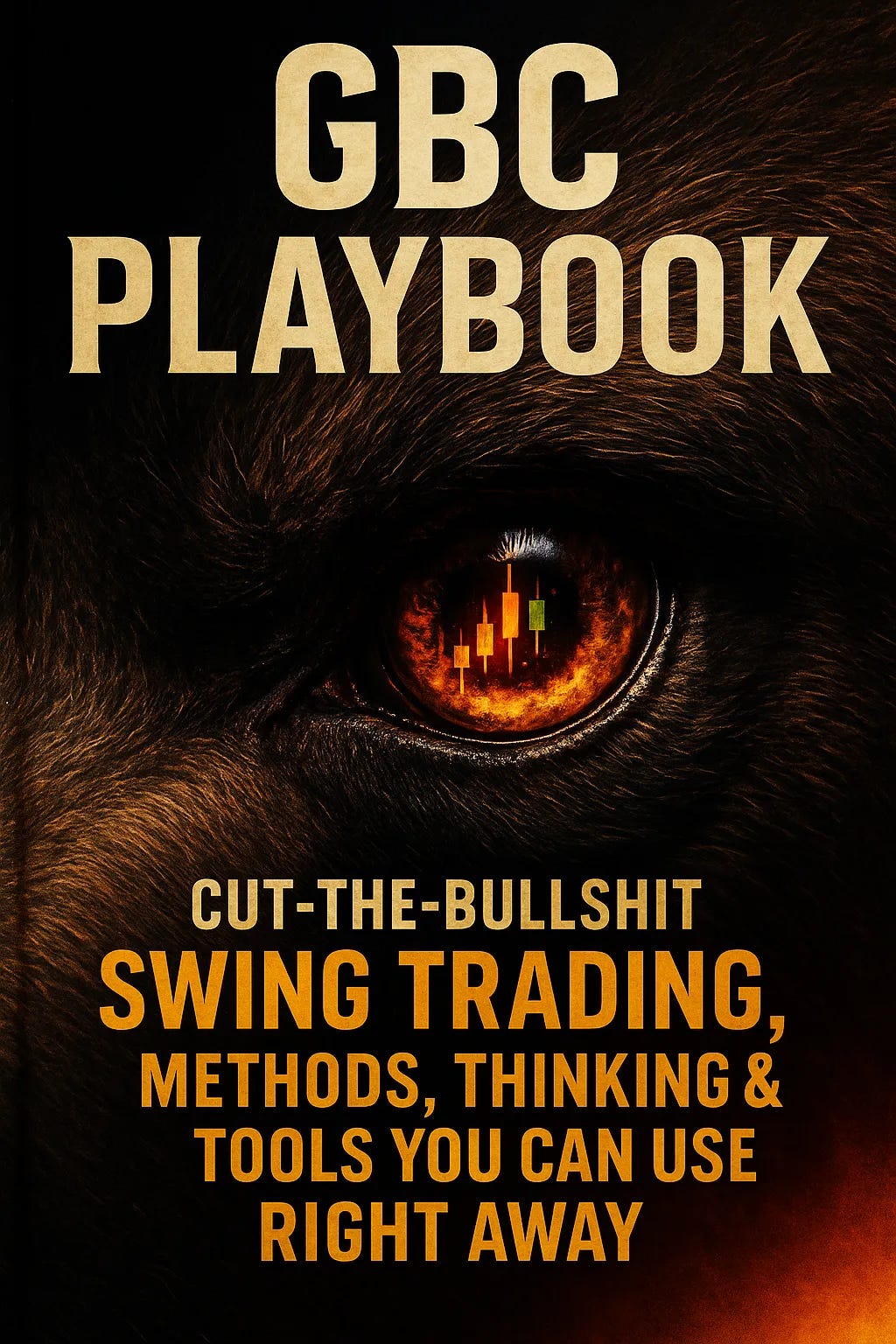GBC Playbook: Volume III
Footprints of Money: Decoding Bulls and Bears on the Chart
The Three Levels: What Truly Moves a Stock
This playbook is here to help. If you’re new or still finding your feet, you’ll get real, practical value from it. If you’re experienced, you’ll recognize a lot, but you may still catch a fresh angle, a small tweak, or a subtle shift that makes a difference.
The heart of it is simple: take what speaks to you and make it your own. Trading is personal. We all see the market differently. We move on different timeframes. We carry different risks, routines, strengths, and flaws.
There is no single right way. There is only your way.
Use what follows to sharpen your process, not to replace it.
Keep what resonates.
Let go of what doesn’t.
Build a style that fits who you are.
That is the most important thing.
Introduction: The Signal in the Noise
Embarking on the journey of becoming a modern investor, you are inundated with information. The digital storm is relentless with tickers, 24-hour news cycles, and an army of self-styled authorities screaming from the social media rooftops with their secrets, shortcuts, and can’t-miss opportunities. They will reference the economic reports, geopolitical conflicts, the latest tweet from the company CEO, or a new sophisticated indicator they “discovered.” For the newbie investor, and even for many experienced traders, it constitutes an environment of extreme information overload. In this complaint, it’s easy to conclude that the answer to the holy grail of market profit lies somewhere in that frenzy; that if you could just acquire more information, or have one more subscription, or a new obscure indicator, you would have the formula that would unlock the market.
That is the holy grail of the market. The idea that complexity equals sophistication is a seduction that many novice traders have fallen victim to.
At the end of the day, the market is expressing something more primordial, more broad-based than important news or economic release. It is speaking the universal language of human emotion, in its raw form—the undistilled, drunken expression of collective greed and fear from millions of players. And, every scream, every holler, every affirmation of this language is not being recorded in an analyst report but instead directly inscribed on the price chart.
The price chart is the only ultimate truth.
A price chart is the battleground where the fight between buyers (bulls) and sellers (bears) is being conducted in real time. As almost all professional traders say, price action is the “footprint of money.” Every transaction involves individuals, from a small retail trader to the hedge fund’s billion-dollar transaction, leaving footprints. These footprints create a path we can follow.
This is how you move from being a gambler tossed by the waves to a captain who harnesses the wind.
🌱 Support Our Work: Buy Us a Coffee🌱
Your small gesture fuels our big dreams. Click below to make a difference today.
Price Action: Deciphering the Market’s Narrative
Price action trading is a methodology of pure simplicity.
Essentially, it is the practice of constructing your trading decisions from a “naked” price chart. This means disposing of the clutter (the lagging indicators such as RSI, Stochastics, and MACD) that too many traders incorrectly depend on to dictate their trading decisions.
These indicators are derivatives of price; they are telling you something that has happened already. Price action has a vantage point, as it is 100% current price reading: it is like reading the story for yourself. You read the current market sentiment and then make your guess on whether the price will continue in either direction with greater accuracy, sitting right on top of the price structure.
To be successful in price action, we need to read the market in three critical areas: learning to read the chart in an individual signal, reading the chart in market structure, and seeing when those two components motivate you at a point of confluence.
Level 1: The High-Probability Signals
Keep reading with a 7-day free trial
Subscribe to Market Moves by GBC to keep reading this post and get 7 days of free access to the full post archives.



